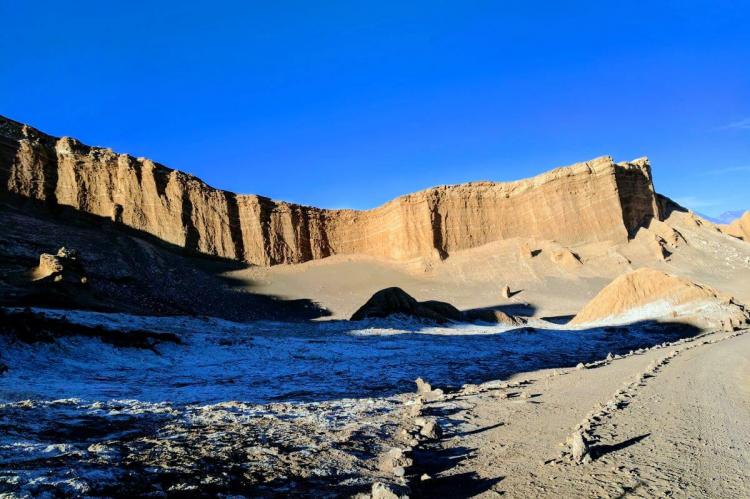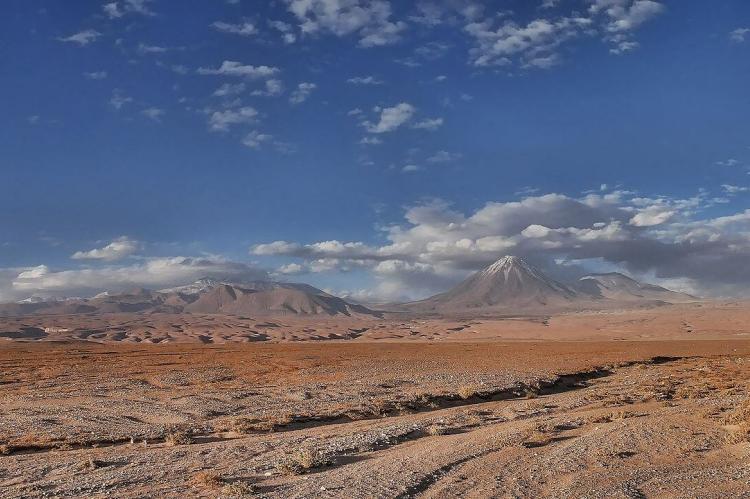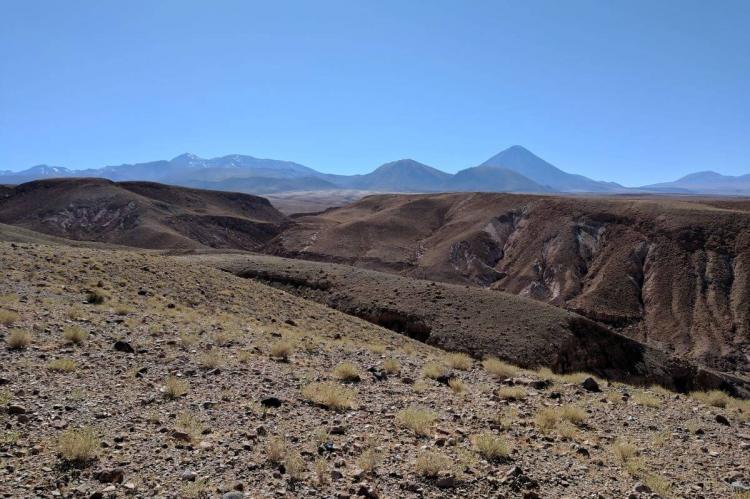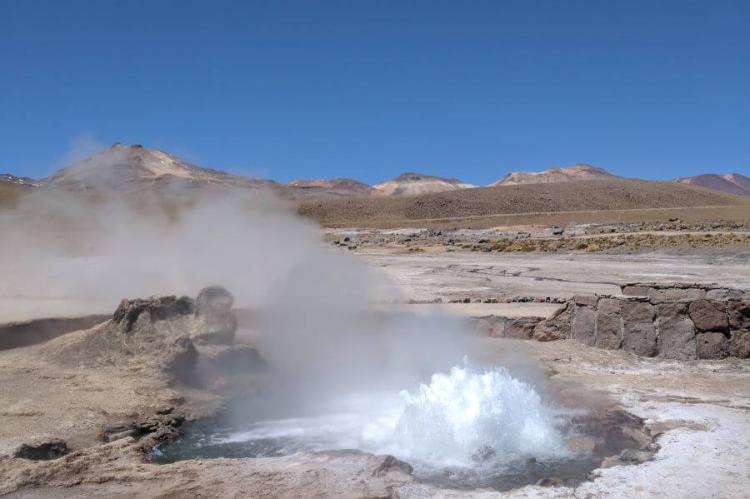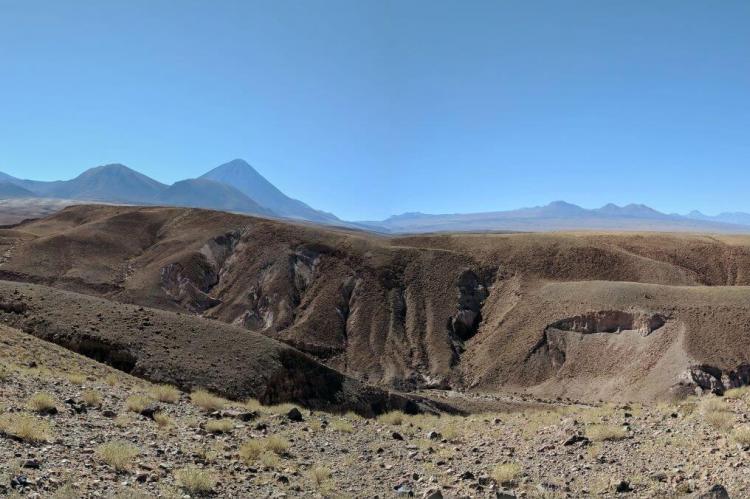The Atacama Desert and Ecoregion: Unveiling Arid Histories and Ecological Marvels
The Atacama Desert, stretching along the Pacific coast of Chile, is not merely a geographical marvel but an intricate mosaic of history, ecology, and adaptation. Beyond its arid expanses lies the Atacama Desert Ecoregion—an ecological classification that extends its influence across adjacent areas.
The Atacama Desert and Ecoregion
Unveiling Arid Histories and Ecological Marvels
The Atacama Desert, a region stretching over a formidable area along the Pacific coast of Chile, is not merely a geographical marvel but an intricate mosaic of history, ecology, and adaptation. Beyond its arid expanses lies the Atacama Desert Ecoregion—an ecological classification that extends its influence across adjacent areas.
Atacama Desert: A Historical Mosaic
The Atacama Desert is a region that spans the sparsely populated and virtually rainless plateau, the Puna de Atacama. According to estimates, the Atacama Desert region occupies 105,000 square kilometers (41,000 square miles) or 128,000 square kilometers (49,000 square miles) if the barren lower slopes of the Andes are included. It holds a wealth of historical narratives within its arid embrace and is a testament to the resilience of life in challenging environments.
The Diaguitas and Changos, the original inhabitants, recognized the region's mineral wealth and the desert became a repository of copper, sodium nitrate (Chile saltpeter), and precious metals. This mineral wealth, however, sparked the Atacama border dispute, culminating in the War of the Pacific in the 19th century. The aftermath brought prosperity by exploiting iron, copper, silver, and gold, shaping the landscape into a mosaic of wealth and conflict.
The remnants of this tumultuous history are scattered across the desert in approximately 170 abandoned nitrate mining towns, including Chacabuco, Humberstone, and Santa Laura. These towns, once vibrant hubs of industry, were gradually deserted after the invention of synthetic nitrate in Germany in the early 20th century. Today, they are silent witnesses to a bygone era, telling tales of boom and bust echoing through the desert winds.
Cultural Heritage and Pre-Columbian Societies
The cultural heritage of the Atacama Desert region transcends its mineral wealth, reaching back to ancient times. The Chinchorro culture, thriving between 7,000 and 1,500 BCE, left its mark on the desert's landscape. These sedentary fishermen inhabited coastal regions, laying the foundation for the region's rich pre-Columbian legacy.
Before the Inca empire and the Spanish arrival, the arid interior of the desert was inhabited primarily by the Atacameño tribe. Known for building fortified towns called pucarás, they navigated the challenges of the harsh environment with resilience and ingenuity.
The emergence of coastal cities during the 16th, 17th, and 18th centuries during the Spanish Empire marked a transformative period for the Atacama Desert. These cities, serving as shipping ports for silver produced in mining centers like Potosí, became hubs of international trade. However, the 19th century brought territorial disputes and conflicts, leading to the Pacific War. Consequently, Chile annexed most of the desert, and coastal cities developed into bustling international ports, drawing a significant influx of Chilean workers.
Economic Shifts and 20th-Century Challenges
The 20th century witnessed significant economic shifts in the Atacama Desert region. The once-prosperous nitrate industry declined, triggering conflicts and protests among the predominantly male population. Once a thriving hub, the desert faced challenges as its economic backbone weakened. San Pedro de Atacama, nestled at about 2,400 meters (7,875 feet) in elevation, became a central point for those exploring the desert's wonders. The town's church, constructed in 1577, is a testament to the enduring human presence in this arid expanse.
With the guano and saltpeter booms of the 19th century, the population of the Atacama Desert burgeoned, primarily due to immigration from central Chile. However, in the latter part of the century, the declining nitrate industry and the predominantly male population posed challenges for the Chilean state. Conflict between miners and mining companies escalated, leading to widespread protests across the region.
Atacama Desert Ecoregion: Ecological Marvels
Beyond its historical narrative, the Atacama Desert Ecoregion, defined by the World Wide Fund for Nature (WWF), encompasses areas with similar ecological characteristics. It is part of the Deserts and Xeric Shrublands biome. It is more extensive than the Atacama Desert, extending around 1,600 kilometers (1,000 miles) along the coast of Chile from near Arica in the north to La Serena in the south. It also includes some inland areas along the Andes. Covering an extensive area of approximately 10,515,000 hectares (25,984,000 acres), it is a continuous strip that influences the biodiversity and ecological dynamics of the region.
Most of the desert comprises stony terrain, salt lakes (salares), sand and felsic lava that flows toward the Andes. The desert owes its extreme aridity to a constant temperature inversion due to the cool north-flowing Humboldt Current and the strong Pacific anticyclone. The aridest region of the Atacama Desert is situated between two mountain chains (the Andes and the Chilean Coastal Range) of sufficient height to prevent moisture advection from either the Pacific or the Atlantic Oceans, a two-sided rain shadow.
The Atacama Desert may be the oldest desert on Earth and has experienced extreme hyperaridity for at least 3 million years, making it the oldest continuously arid region. The Atacama is so arid that many mountains above 6,000 meters (20,000 feet) are completely glacier-free. As a result, only the highest peaks (such as Ojos del Salado, Monte Pissis, and Llullaillaco) have some permanent snow coverage.
The Atacama Desert Ecoregion's intrinsic value lies in its composition's unique nature, boasting high levels of endemism and remarkable adaptations for survival in some of the planet's most demanding conditions. The arid, almost barren landscape presents challenges for flora and fauna, yet life has found a way to adapt and thrive within these extremes.
Flora and Fauna: Surviving in Extremes
The climatic and geographic conditions of the Atacama Desert Ecoregion are often considered the driest place on Earth, creating an environment where only the most adaptable life forms can endure. The flora, numbering over 500 species, showcases extraordinary adaptations to extreme aridity. Herbs and flowers like thyme, llareta, and saltgrass coexist with trees like chañar, pimiento, and the leafy algarrobo. Cacti, succulents, and other resilient plants thrive in this challenging climate.
The flowering phenomenon known as Desierto Florido transforms the landscape from September to November in years with sufficient precipitation, painting the desert with vibrant colors. Despite water scarcity, these plants have evolved mechanisms to survive and thrive during opportune moments.
The ecoregion's fauna is characterized by its limited diversity due to the extreme aridity. Some areas are so arid that no plant or animal life can survive. However, exceptions exist, and specially adapted species have carved out niches in this challenging environment.
Birds, one of the largest animal groups in the Atacama, find refuge along the coast. Humboldt penguins nesting in desert cliffs overlooking the ocean and Andean flamingos flocking to salt flats near the Pacific showcase the adaptability of avian life in this arid expanse. Other bird species, including hummingbirds and sparrows, visit the Lomas seasonally to feed on insects, nectar, seeds, and flowers. Threatened species, such as the endangered Chilean woodstar, find sanctuary in the unique ecological niches created by the desert's extreme conditions.
Mammals, too, have adapted to the challenges of the Atacama. Darwin's leaf-eared mouse, specially adapted to arid environments, is one of the few mammal species permanently residing in this region. The South American gray fox and the viscacha, a relative of the chinchilla, inhabit less arid parts of the desert.
Larger animals, such as guanacos and vicuñas, graze in areas where grass grows, primarily seasonally irrigated by melted snow. Seals and sea lions often gather along the coast, further showcasing the dynamic interactions between terrestrial and marine life in this unique desert ecosystem.
Conclusion
The Atacama Desert and its ecoregion unveil a captivating narrative of geological wonders, historical complexities, and ecological marvels. This arid landscape beckons exploration and understanding, from the mineral-rich plateaus to the resilient flora and fauna surviving in extreme conditions.
As we traverse the desert's vastness and delve into the ecoregion's ecological intricacies, we witness a harmonious interplay between nature, history, and adaptation, leaving an indelible mark on the tapestry of our planet. The Atacama, with its silent mining towns, coastal cities, and unique ecosystems, stands as a testament to the enduring spirit of life in even the harshest environments, inviting us to uncover the secrets woven into its arid terrain.
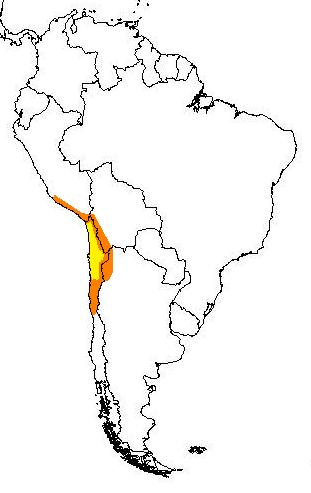
The area most commonly defined as the Atacama Desert is in yellow. In orange are the outlying arid regions.

